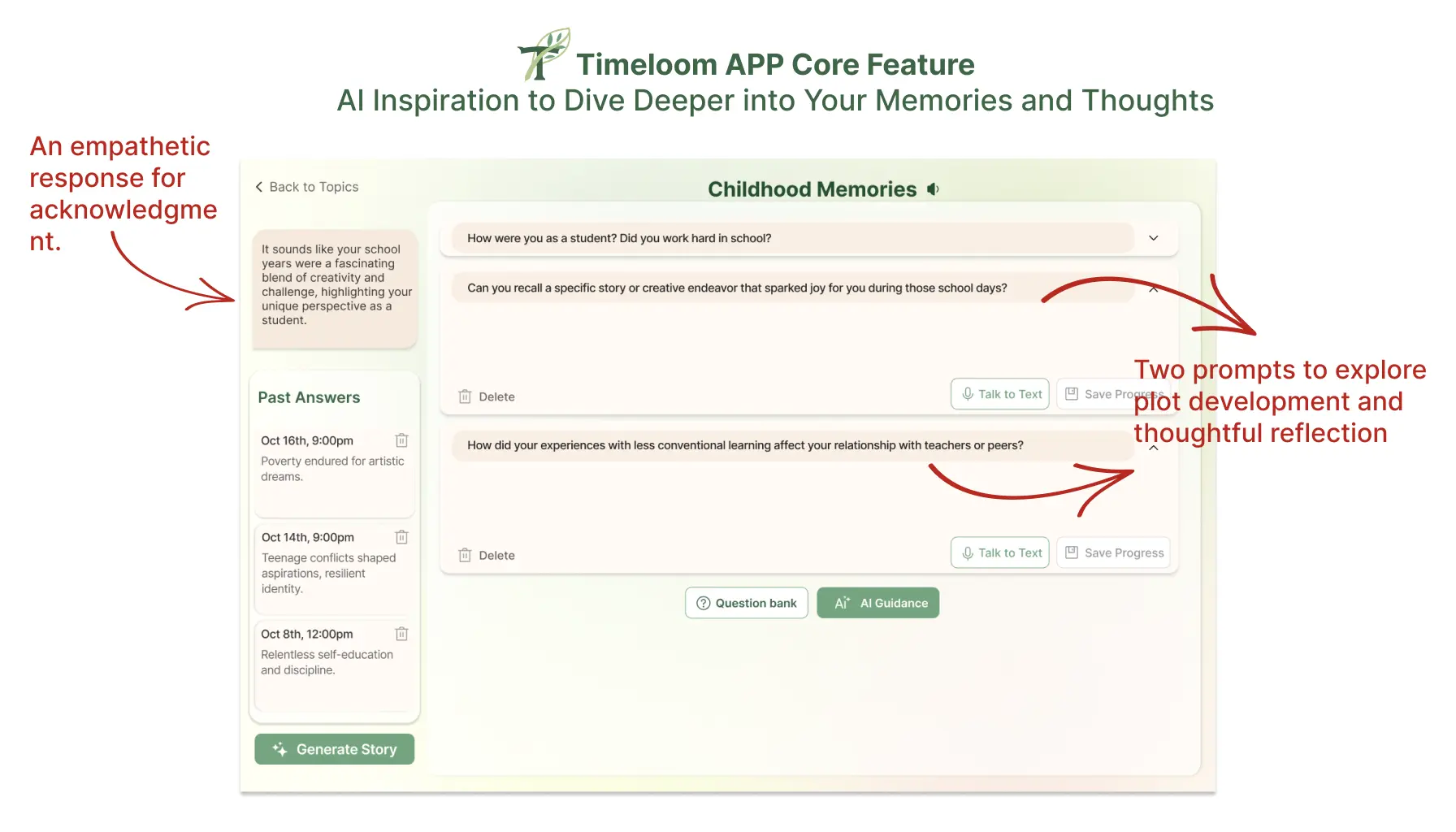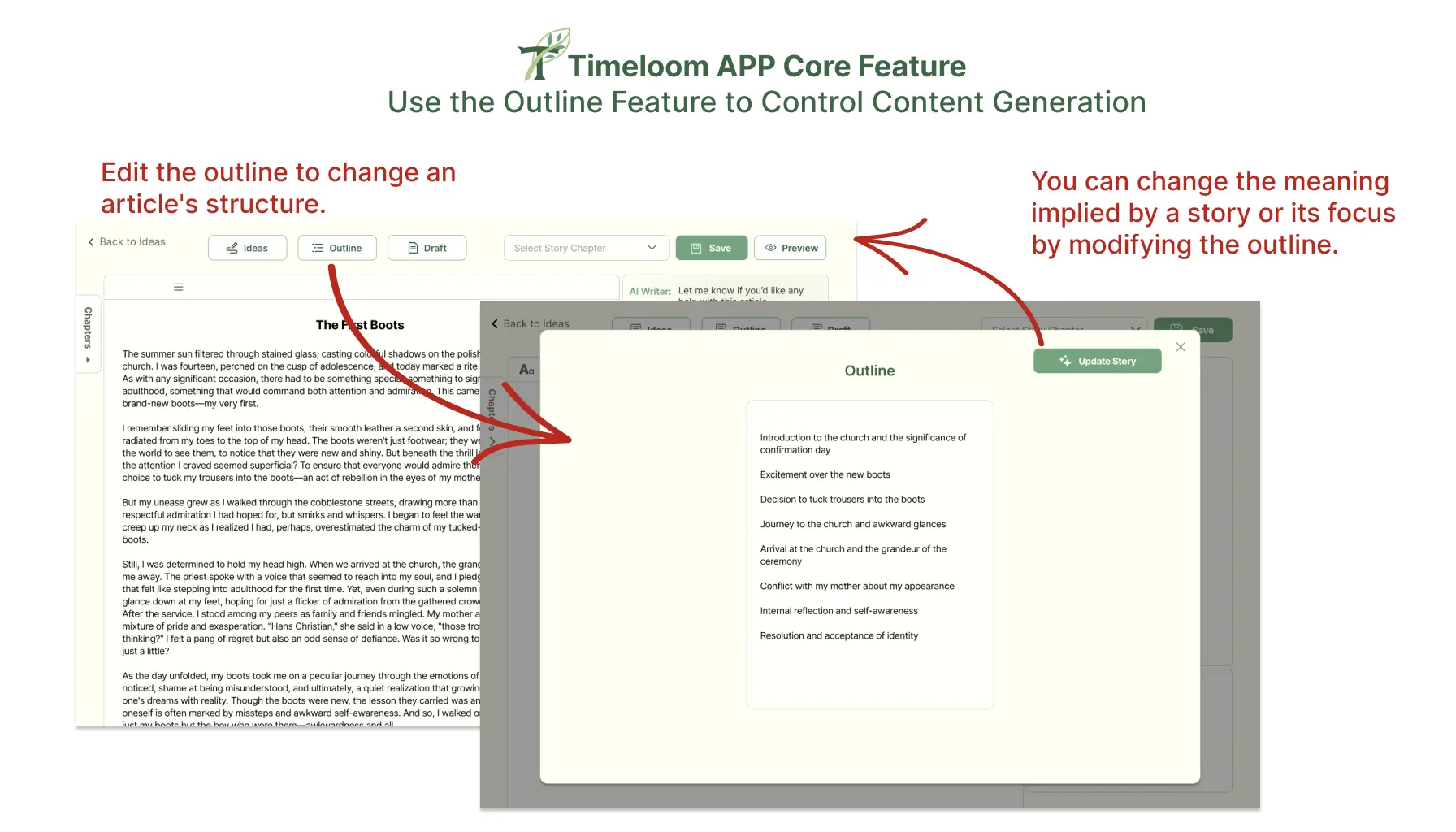Memoir Writing With AI: Unlocking Creative Flow

Achieving Flow State in AI-Assisted Memoir Writing
Starting a memoir can feel overwhelming. As I browse online writing communities, I often see questions like "How long does it take to finish a memoir?" or "Is it worth starting?" These concerns are natural, but they shouldn’t hold you back. Personal storytelling, especially through memoir writing, offers a deeply rewarding journey of self-discovery. With AI writing assistance, this journey becomes even more accessible and enjoyable.
Let me share something that transformed my writing process: the integration of AI into my creative workflow. While writing can sometimes feel challenging, I’ve found myself writing more freely than ever before, both professionally and in my personal journaling, thanks to AI assistance. When I sit down to write, I open a few ChatGPT windows and let the AI help me map out ideas, creating a seamless flow of thoughts to words. This experience reminds me of what psychologists call "flow state" - a concept popularized by Mihaly Csikszentmihalyi - where you’re fully immersed and energized by your creative process. In this article, I’ll show you how to harness AI tools to make memoir writing not just manageable, but truly enjoyable and resistance-free.
A Step-by-Step Guide to AI-Assisted Memoir Writing
Step 1: Finding Your Starting Point
The beginning is often the most challenging part of writing a memoir. When we reflect on our life stories, we’re confronted with countless memorable moments worthy of sharing. You might notice this yourself when telling stories to friends or family – their enthusiastic reactions often confirm that these memories deserve to be preserved in writing. Yet many aspiring writers find themselves paralyzed by the sheer volume of experiences, uncertain how to distill them into a coherent narrative.
While traditional writing guides often advise starting with a clear purpose and message for your audience, I’ve found this approach can be unnecessarily restrictive. Yes, having a focused theme is important for creating a memoir that resonates with readers. However, forcing yourself to define a perfect "life purpose" at the outset can turn you into a philosopher rather than a storyteller. Remember, writers grow and discover their message through the act of writing itself.
The key is to start with what moves you. During my university years, I learned a valuable principle: write extensively first, then refine. This approach applies to all creative work – your final piece should be a thoughtful distillation of your ideas. Creating compelling stories comes from deep exploration of your thoughts and memories. Gather materials that spark recollection: old journals, photographs, meaningful objects. These tangible connections to your past can trigger memories and add richness to your narrative. Online communities also offer writing prompts that can help unlock forgotten stories and perspectives.
This is where AI becomes an invaluable partner in the writing process. While some may focus on AI’s limitations, its strength lies in creative brainstorming and idea generation. Take the "AI Guidance" feature in Timeloom, for example. This tool is designed to help you explore your memories more deeply and uncover hidden scenes in your mind. After you record your initial thoughts about a memory, it offers targeted suggestions to help you uncover related details and emotions, enriching your story’s plot. By responding to these AI-generated prompts, you can maintain your creative momentum without disruption. This approach not only helps you begin writing but guides you into that coveted "flow state," where ideas and memories surface naturally and writing becomes effortless.

Step 2: Choosing Your Memoir’s Structure
One of the most common questions I hear from aspiring memoir writers is about structure. While there’s no one-size-fits-all approach, understanding different structural options can help you find the one that best serves your story. Let me share three powerful approaches that work well with AI assistance.
The Classic Chronological Approach
Most life memoirs follow a chronological structure, guiding readers through events as they occurred. This approach works particularly well when your story involves complex plots or numerous characters, as it provides a natural framework for understanding how events unfold. Think of it as creating a timeline where each event builds upon the previous one, helping readers follow your journey step by step.
The Thematic Journey
If you’re writing to explore specific themes or share particular life lessons, consider organizing your memoir thematically. This structure allows you to dive deep into particular aspects of your experience – perhaps your relationship with family, your career evolution, or your personal growth. The thematic approach enables more focused storytelling and often leads to deeper insights.
A variation of this is the associative structure, where stories flow based on emotional or mental connections rather than time or deliberate themes. While this approach can create beautiful, intricate narratives, it requires careful attention to transitions to ensure readers can follow your journey.
The Narrative Arc
Whether you choose a chronological or thematic structure, incorporating a strong narrative arc can make your memoir more engaging. This classic storytelling framework includes five key elements:
Inciting Incident: The pivotal event that launches your memoir’s journey
Rising Action: The challenges and growth that build reader investment
Climax: The transformative high point where change becomes inevitable
Falling Action: The reflection on lessons learned and their impact
Resolution: The closing insights that reveal your transformation
The AI-Assisted Mosaic Approach
For those who find traditional structures constraining, I’ve discovered a more flexible method that works beautifully with AI assistance: the mosaic approach. This technique allows you to write individual scenes or vignettes first, then arrange them into a cohesive narrative later. Here’s how to do it with AI support:
-
Identify Key Moments: Start by brainstorming the defining moments in your life. Ask your AI assistant to generate thought-provoking writing prompts that can help unlock memories you haven’t considered. The AI can suggest questions about different life periods or themes, helping you uncover forgotten stories and experiences.
-
Create Vivid Vignettes: Write each memory as a self-contained scene, focusing on sensory details and emotions. Use AI as a creative partner by asking it to help you expand these scenes. It can suggest additional sensory details to include, perspectives to consider, or emotional layers to explore. The goal is to make each vignette rich and engaging on its own.
-
Discover Patterns: Once you have several vignettes written, analyze them for recurring themes or emotional arcs. AI can be particularly helpful here - ask it to identify common threads, relationships, or patterns across your stories that you might have overlooked. These could be themes like family relationships, personal growth, career challenges, or recurring life lessons.
-
Experiment with Structure: Try different ways of arranging your vignettes. You might group them thematically, chronologically, or by emotional intensity. Use AI to brainstorm different organizational approaches and to help identify natural transitions between pieces.
-
Weave Your Narrative: Finally, add reflective passages that connect your vignettes and reveal deeper insights about your journey. AI can help you identify overarching themes and suggest ways to strengthen these connections while maintaining your authentic voice.

For example, tools like Timeloom offer features specifically designed for this mosaic approach, with AI guidance for story development and organization.
Step 3: Writing With AI as Your Creative Partner
With your structure in place, it’s time to start crafting individual chapters or scenes. Each piece of your memoir should begin with either a contextual foundation or an engaging hook—perhaps a compelling moment, a thought-provoking question, or a vivid scene that pulls readers in. Remember the basic storytelling components: setup, conflict, and resolution. Most importantly, don’t hold back; your authentic emotions and insights are what make your work meaningful.
I love this quote from Verlyn Klinkenborg that captures the essence of developing as a writer:
""Your task isn’t merely to write with these qualities in mind. It’s to read with them in mind too. You’re learning to write, gathering materials to write from everything you read as well as everything you write."."
This wisdom particularly applies to AI-assisted writing. While accomplished memoirs often feature literary devices like metaphors, foreshadowing, and symbolism, don’t expect perfection in your first draft. The key is to get your thoughts down first, then read and understand what your story truly means. Writing is inherently a reflective process—you often need to write the sentences before you can fully grasp their meaning and implications.
AI can be particularly helpful in this initial drafting phase. Ask it to help generate outlines based on your key plot points or to suggest different ways to open a scene. You can even have it create rough drafts that you can then refine with your personal voice and details. The goal isn’t to let AI write your memoir, but to use it as a tool to overcome blank page syndrome and maintain your writing momentum.
Focus on clear, concise prose. When you find yourself writing complex sentences, use AI to help simplify them while preserving their meaning. Let your drafts evolve iteratively until the language truly represents your voice. Tools like Timeloom’s AI draft generator can help streamline this process, allowing you to focus more energy on crafting the meaningful, creative elements of your story.
Step 4: Revising with AI Insights
The revision stage is where your memoir truly comes together. This is when you ensure each chapter contributes to your overarching theme and remove details that might distract from your core narrative. AI can be an invaluable partner here, helping you identify inconsistencies, suggest stronger transitions, or highlight sections that might benefit from more emotional depth.
Don’t be discouraged by the timeline—memoirs typically take anywhere from a few months to several years to complete, with the polishing phase often being the longest. This is natural and even beneficial. As time passes, you may discover new ways to present your stories or find deeper meanings in past experiences. Your theme might evolve, requiring content reorganization to better align with your intentions. AI tools can help you experiment with different arrangements and perspectives while maintaining the authenticity of your voice.
Embracing the AI-Assisted Writing Journey
My own journey with AI-assisted writing began in 2023 with ChatGPT 3.5. What started as a work-related tool evolved into something more personal—I began using AI to reflect on my thoughts and discovered new perspectives within myself. This practice has made me more open to sharing my ideas and more committed to regular self-reflection. Through this process, I’ve gained deeper insights into my identity and my connections with others.
Writing a memoir is more than just recording events—it’s a journey of self-discovery and growth. With AI as your creative partner, this journey can become more accessible and enjoyable. Whether you’re using general AI tools like ChatGPT or specialized writing platforms like Timeloom, the key is to maintain your authentic voice while leveraging AI’s ability to enhance your creative process.
I look forward to sharing more insights about this evolving creative partnership between writers and AI. In my next article, I’ll explore how to maintain visual consistency in your writing projects—another area where AI can be surprisingly helpful. Stay tuned!
